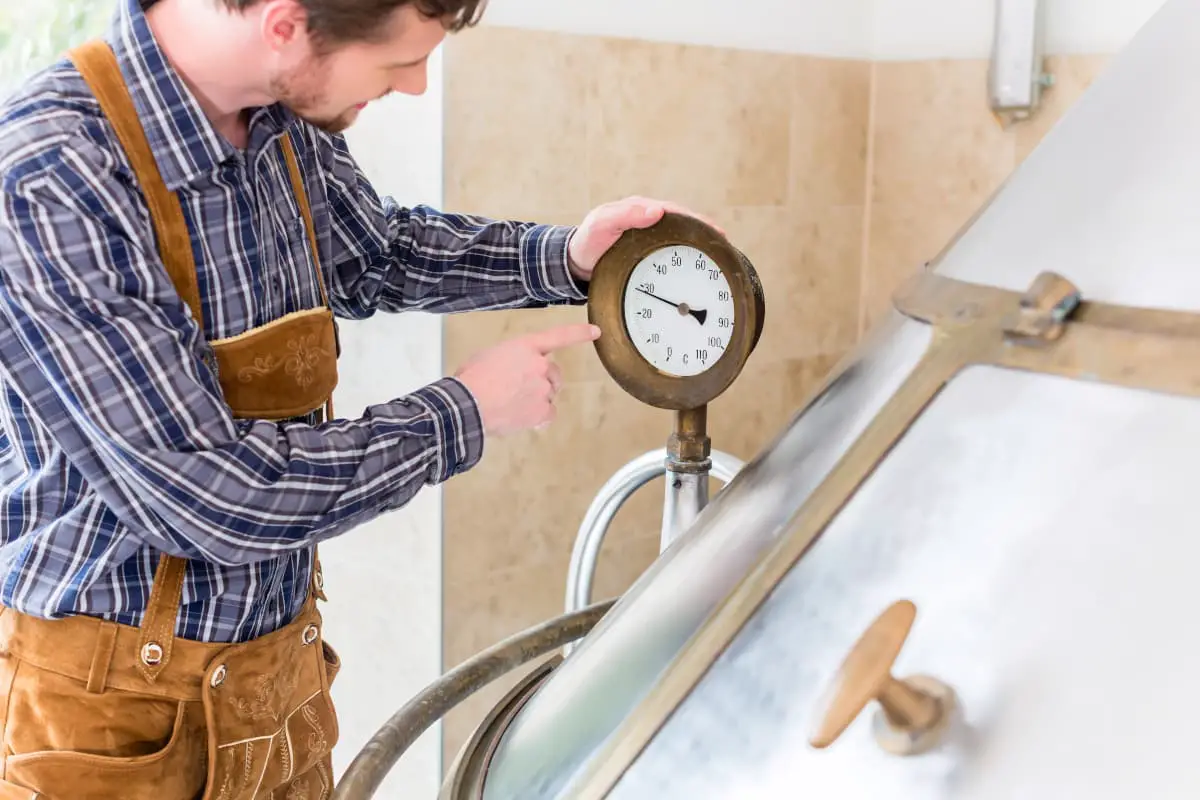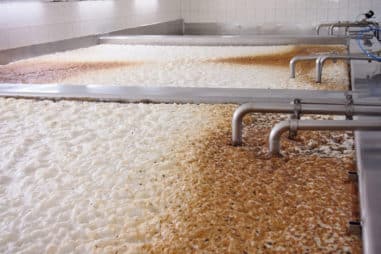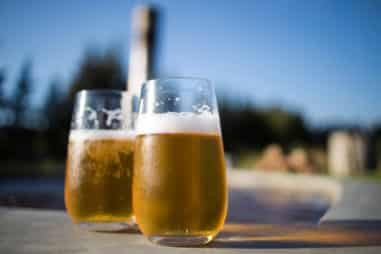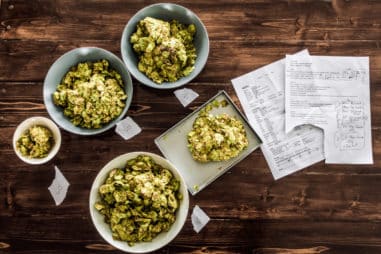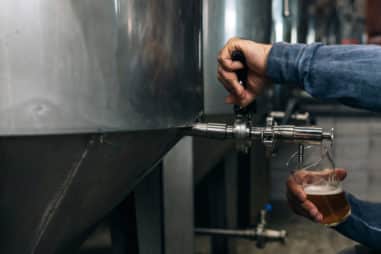Temperature dictates how enthusiastic the staff behind the scenes are, aka yeast. If you give them the right environment, they will work wonders for your beer.
Temperature control is not a fire-and-forget thing. You need to monitor and adjust. Stick to targets and avoid limits. To make the most out of your brew, understand what these temperatures mean to make them function for you.
What Is the Relationship Between Fermentation and Temperature?
In general, temperature dictates how a beer’s fermentation will occur and ultimately end up. However, there is no absolute temperature to get an “optimal” solution. It is wholly dependent on the recipe you are brewing. This is a reason why fermentation temperature ranges vary when taken from different sources of information.
How Does Air Temperature Affect Fermentation?
Air Temperature does not have a direct impact on wort temperature for fermentation. Still, it has an indirect relationship through convective heat exchange by acting as a heat sink or source.
In terms of the actual effect, yeast is very sensitive to temperature. In the simplest of terms:
- To Hot, they get overworked and possibly die.
- Too Cold, they become lazy and lethargic.
- At Just Right, they work efficiently to turn sugar into alcohol, aka beer.
Air is quite a fickle mistress. So, for a homebrewer who brews in an environment with air temperature swings, it can be devastating for fermentation.
A closed vessel with temperature control is advised in places with unstable air temperatures. Or perhaps a cellar would work since these places usually maintain a constant temperature. And if you can afford it, a fully air-conditioned room with mechanical ventilation would be sweet.
How Does Cold Weather Affect Fermentation?
Cold Weather tends to slow down any process, be it fermentation or human motivation. This is why Lagers were developed to address brewing downtime in winter. If you did not already know, lager yeasts evolved in colder climates.
In terms of actual effect, yeast in fermentation stick together and get out of suspension. How this happens exactly is not fully understood, and is a matter of scholarly pursuit. This phenomenon reduces yeast contact with sugars, which slows down the conversion process. Of course, the yeast strain plays a vital role in this situation, therefore, the actual temperature that fosters this effect will vary.
How Important Is Fermentation Temperature?
If you want to hit a certain recipe’s flavor, color, and aroma specifications to a tee, you need to mind the temperature. And not only does temperature affect conformance to a recipe, but the whole process can also go haywire if targets and limits are not met. This applies to, not just fermentation, but the whole brewing process.
Two of the worst-case scenarios where you will be forced to throw your batch:
- Too Hot, and undesirable organisms, flavors, and aromas can overtake the brew.
- Too Cold, and your beer can become overly sweet from all the unconverted sugars.
Temperature is so important that experts recommend that you invest in a thermometer. And to up your level of dedication to accuracy, calibrate a mechanical thermometer with a 50/50 solution ice water at 32°F (0°C).
What Temperature Is Best for Beer Fermentation?
Here are two sets of ranges for the biggest classes of beers:
- Ales: 55 to 70°F (13 to 21°C)
- Lager: 40 to 54°F (4 to 12°C)
Note, however, that these temperatures are not doctrine. Peruse your specific beer recipe to know the exact value to maintain.
Why Is Fermentation Done at 40 Degrees?
Forty (40) Degrees Fahrenheit (4°C) is the “lower-end” of the fermentation temperature span for Lagers and lager yeasts. Take note of “lager yeast” because if you went and did this for incompatible ale yeasts… you will have a yeast boycott on your hands.
It has been generally shown by brewers and scientists that these, at the very least, occur:
- Reduced Production of Esters. These are responsible for the possible citrusy and fruity notes in beer.
- Reduced Production of Phenols. These are accountable for the likely smoky, medicinal, and astringent experience in beer.
Of course, these are not the only sources of these flavors and aromas. So do not make the assumption that there will be a total elimination of them when fermenting at “40.”
At the end of the day, this fermentation temperature will help you get a smooth, clean, and crisp Lager.
What Temperature Kills Yeast Fermentation?
If you want to stop fermentation for whatever reason, the magic number is 140°F (60°C). This is mostly used when pasteurizing the beer for the following basic reasons:
- The desired taste and scent profiles have been achieved such that fermenting any longer will ruin your vision.
- Reduce the chance of spoilage and increase shelf-life without the need for additives and preservatives.
Cold Fermentation vs. Warm Fermentation
On a fundamental level, Cold and Warm Fermentation yields Lagers and Ales, respectively.
But to be more accurate, you use Cold Fermentation to minimize flavors resulting from yeast action, e.g. fruitiness. If you want a simple alcoholic beverage that has no surprises from yeast, cold is the way to go. That is not to say that simplicity cannot be exciting. How you process your grains will be the biggest contributor to your beer’s palatability.
For Warm Fermentation, complexity is gained from the by-products of the yeast’s work, on top of any other ingredient contributions. Theoretically, you would get a beer bursting with signature flavors from all the components, including yeast.
Can I Increase Fermentation Temperature?
You can use a methodology whereby you start at a lower-than-ideal temperature, then work your way up to the ideal temperature. Of course, this is one of many ways to approach your yeast strain’s ideal fermentation temperatures.
When Should You Raise the Temperature of Fermentation?
One approach is to start at a temperature relatively lower than the target ideal. You can then work your way upwards after active fermentation (more or less three days from pitching). A rough method would be to:
- Take the average of the chosen beer type’s working temperature range and apply it during active fermentation.
- Every day, increase the temperature by one to two degrees Fahrenheit (a little over 1/2 to 1°C) until fermentation is complete. Completion should be confirmed via hydrometer readings unless you are totally sure you know what you are doing.
This is but one of many ways to go about raising wort temperature. Selecting the starting temperature is based on trial and error. This is especially true when you need to consider ambient temperature effects. If the climate in your area is on the hotter side, you probably want to start at the lower end of the range and increment smaller.
What Does Increasing the Temperature Do to the Rate of Fermentation?
The Rate of Fermentation increases with an increase in temperature. And from this increase, you will get more yeast by-products of fermentation — whether you like it or not.
The yeast becomes more energetic and consumes greater amounts of sugar. Excuse the unrefined description but the more the yeast eats sugar, the more they multiply and poop out alcohol and fart/burp carbon dioxide. All the good stuff that makes beer great.
Why Does Fermentation Increase With Temperature?
You cannot know the “why” without getting familiar with biological processes and terms.
The yeast produces enzymes that work under a specific temperature range. The enzymes that convert sugar into alcohol only work up to a certain temperature. This is the reason why yeast can get “overworked,” as some people say, but their tools are what is disabled.
Moreover, yeast reproduction increases with temperature. However, even this has a range with limits depending on yeast strain. Yeast is a life-form that reproduces best in moderate temperatures.
The funny thing with these explanations is that they open the topic up to more questions. Unfortunately, this is as deep into it as is relevant to brewing beer.
Does Fermentation Increase Temperature?
Fermentation is an Exothermic process. Exothermic means a chemical reaction that generates heat as a result of the process. This is in the same way exercise or physical labor increases body heat.
Why Is Temperature Warm During Fermentation?
Heat is released when yeasts do their thing. This heat is absorbed by the nearby environment and objects through heat transfer. This is the warmth that you would sense.
How Much Heat Does Fermentation Give Off?
The temperature rise you would get from active fermentation is approximately 10 to 15°F (5.5 to 8.3°C). Relative to the ideal target temperatures, these values are quite high.
You can conjecture that this is the reason why you should start your fermentation at a lesser temperature. This is in anticipation of this particular occurrence. You would not want to overheat your yeast before they get anything worthwhile done.

